Poging GOUD - Vrij
Getting To Grips With Galls
The Gardener
|January 2019
Plant galls may be unsightly, but they’re no reason to panic!

Abnormal growths in plants can usually be attributed to the formation of galls. Galls can form on any part of the plant, from the roots to stems, flowers and leaves, and usually appear when the plant has been attacked by bacteria, viruses, parasites, fungi, mites, nematodes or certain insects. Alternatively, they can often simply be an abnormal growth in the plant’s cell structure – a bit like cancer in a mammalian cell.
We notice galls because they appear as unsightly growths on the plant, and we immediately suspect them to be harmful. It is true that they are unsightly and that they interfere with the normal functioning of the plants growth, but seldom do they pose any real threat to the plant’s health, unless the growth is extensive. Leaves that suffer serious cover may be unable to photosynthesise and could eventually die and fall off. Also, growth beyond the point of a gall on a twig might stop, and some plants may exhibit stunted growth, because the gall is tapping into vital nutrients that the plant needs during the growing phase. If a large number of galls are present on a young plant it may suffer considerably more than a mature one.
Rather bizarrely, some galls can actually be quite attractive. A Cynipid wasp found in America produces a gall resembling pink and white fluffy candyfloss.

How are galls formed?
Dit verhaal komt uit de January 2019-editie van The Gardener.
Abonneer u op Magzter GOLD voor toegang tot duizenden zorgvuldig samengestelde premiumverhalen en meer dan 9000 tijdschriften en kranten.
Bent u al abonnee? Aanmelden
MEER VERHALEN VAN The Gardener

The Gardener
Preserving apples
The end of the apple season means that apples need to be preserved for the next six months until the next harvest is ready.
3 mins
July/August 2025
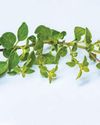
The Gardener
Golden Oregano
Origanum vulgare ‘Aureum’, as its name suggests, is golden yellow in full sun and cool weather. These bright herbs are highly fragrant, with a classic oregano taste and aroma, and are often used in the kitchen for pasta and pizza. In summer, the yellow leaves will be covered with small pink and purple flowers.
1 min
July/August 2025
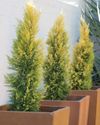
The Gardener
Potting up a conifer
Conifers generally are well-behaved plants with interesting, evergreen foliage and mostly formal and neat growth habits. This makes them stately candidates for roomy containers.
1 mins
July/August 2025
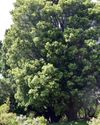
The Gardener
Enduring and venerable trees
There cannot ever be a good reason not to plant a tree, and somewhere there is just the right tree for you...
3 mins
July/August 2025
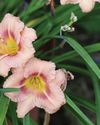
The Gardener
Daylilies make a comeback
Daylilies are making a comeback in 2025 with even more shapes, twists, ruffles, pleats, picotees, curves, and stunning colours and colour combinations. There are singles and doubles, big and small flowers, each unique, and yes, they only last a day! They do, however, have another flower bud just behind that one, ready to show off the next day.
1 min
July/August 2025
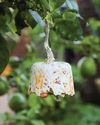
The Gardener
How to make a fat ball
Some birds love a fat ball in winter to boost their energy levels. These are easy to make and a fun project to do with the kids.
1 min
July/August 2025

The Gardener
The Princess and Obsession
It only takes two wonderful modern hybrids of old garden favourites to prepare a garden and containers for an unforgettable spring performance.
1 mins
July/August 2025
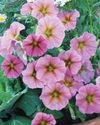
The Gardener
Pink and pretty
Pink colour shifters with hot appeal...
2 mins
July/August 2025

The Gardener
GROW the WALL
If you want lots of flowers in plantable concrete retaining wall blocks or lush stems and foliage cascading over dry stone walls, we have good plant suggestions for you!
5 mins
July/August 2025

The Gardener
Winter indoor plant care
Winter can be a tough time for your houseplants; a drop in natural light, drier air, and cold drafts can all influence their lush appeal. As plant lovers, spending more time indoors in winter creates opportunities to keep a close eye on your leafy companions and make some changes to avoid these common winter blues.
1 min
July/August 2025
Translate
Change font size

